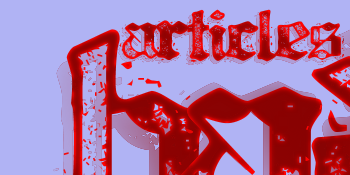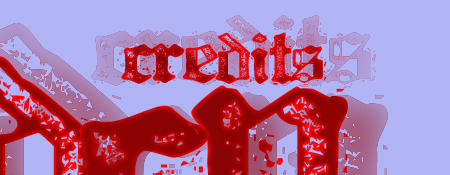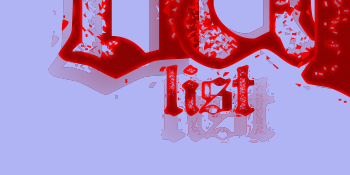

|

|
 |
 |
 |
GNG
iOS
Capcom rebooted the Ghosts 'N Goblins series
with Maximo, and revitalized the series with Ultimate Ghosts 'N
Goblins. Both incorporated looser control and new abilities like cliff-grabbing
and special attacks that gave the player more leeway than the older titles.
Not that it made the series any easier, but it sure made it more
approachable. In fact, the Maximo sequel was so good that
it made Capcom's cancellation of Maximo 3 one of the biggest travesties
in modern video games. Fast-forward to the dawn of the iOS. Capcom had plans
for it, but I don't ever remember them saying anything about bringing their
most iconic IPs to it. |
|
|
|
I never
liked Apple products; from the Apple IIe and Macintosh to the iMac and
iPod, I just never liked them. I was even wary of the iPhone when it came
out, carefully looking at every aspect of it. Opportunity knocked, at
the whim of an exceptional woman, and I had a chance to get it. I wasn't
going to get it just for the music or phone features; there had to be
more to warrant a purchase. Then it hit me that Capcom was pushing iPhone
titles some time back, so I researched a little and found that some of
Capcom's most iconic IPs were among them. Buying it was actually more
involved than buying a vehicle, but it was worth it because I found that
Capcom made a new Ghosts 'N Goblins for it! Hot on the heels of
the Japan-only Kai edition of Ultimate Ghouls 'N Ghosts,
but made on the iOS, for the iOS, from the ground up!
|
|
|
|
It was the first app
I downloaded, and still one of the best. Instead of playing it right away,
I saved it for my long train rides and I was thankful I did. I had to
cover work for some hung-over idiot all the way out in Futt-Buck Egypt,
and the only thing worse than that is the train ride back. I can
still remember the bitter cold and how thankful I was when the train finally
arrived; the heated seats were instant relief as my body thawed. Ghosts
'N Goblins - Gold Knights made that long-ass ride go a lot
quicker, and without it I would have lost my mind. And it really did span
the whole ride; even dying a billion times, I still beat the whole
game that day! Even after going through the game, though, there's still
much more to Ghosts 'N Goblins Gold Knights and its sequel. Ghosts
'N Goblins - Gold Knights and its sequel are both great; not quite
the masterpiece Maximo - Army Of Zin was, but better-executed than
Ultimate Ghosts 'N Goblins. That doesn't detract from everything
these two games are, though. Even with the prequel/sequel relationship,
the two are still surprisingly different from each other. Having one means
you must have the other to experience it in its entirety.
|
|
|
|
(Un)Separated
At Birth
Even with the "updated" Ultimate Ghosts 'N Goblins Kai,
the problem was that the game was still tough to pick up. It was
hard to enjoy all the cool stuff they worked so hard to put in the game
because they made so much of the game based on the rigidness of old. Maximo
- Army Of Zin was designed well, and ultimately a testament to series
progression. It controlled smoother than Maximo and its predecessors,
and showed that the series could stay relevant even without the enraging
difficulty that defined it. The nostalgic platforming was still a challenge,
but it was more forgiving and within bounds (control was no longer a valid
excuse for failure). It wasn't broke, but Capcom attempted to fix it in
Ultimate Ghosts 'N Goblins with unforgiving platforming and reverting
back to difficult control. Didn't they see that Maximo - Army Of Zin
controlled like a dream?!
Even with a newly-added
ability to grab onto and hang from cliffs, so many parts of the game were
ridiculous and barely fair; Ghosts 'N Goblins - Gold Knights and
its sequel aren't like that, though. With
its touch-based controls, Ghosts 'N Goblins - Gold Knights and
its sequel control better than the original Maximo and Ultimate
Ghosts 'N Goblins both! I rarely fail the platforming parts, and I
know it's my fault when I actually do. Lancelot can even Mario-jump
enemies in Ghosts 'N Goblins - Gold Knights! It's the perfect addition
to make the game more approachable, but the ability sadly didn't make
it to Ghosts 'N Goblins - Gold Knights II. With great control similar
to Maximo - Army Of Zin, and visual similarities with Ultimate
Ghosts 'N Goblins, the Ghosts 'N Goblins - Gold Knights and
its sequel feel essentially like a hybrid.
|
|
|
|
It felt like Arthur
did almost nothing in previous GNG entries. Even with upgraded
armor to make him stronger, it was like he was hamstrung by some sort
of uncontrollable weakness. The charm of Maximo - Army Of Zin lied
in how much damage you could do. You didn't just feel like you
were doing a ton of damage; you saw it in explosions all around
you as enemies fell helplessly to your immense firepower. Trails of dropped
power-ups from the fallen were a testament to that power. Ultimate
Ghosts 'N Goblins (and its supposedly easier upgrade) had the armor
upgrade system, too, but it seems to better even out the odds in Ghosts
'N Goblins - Gold Knights and its sequel. There's nothing quite like
anticipating armor upgrades, then drenching enemies in a hail of arrows
when you finally do get it. There's a plethora of ways you leave
chaos in your wake with all the different weapon upgrades, and that's
not even counting the age-old charge attack from previous GNG entries!
It's back again, and it's devastating as ever, stopping enemies dead in
their tracks. Determined by character armor and weapon upgrades,
these attacks release a violent display of destructive, screen-filling
pyrotechnics from lightning storms and energy starbursts to boomerang
volleys, fire storms, and even dragons.
|
|
|
|
Knights
Of The Round
Those features (though varied) are in both Ghosts 'N Goblins - Gold
Knights and Ghosts 'N Goblins - Gold Knights II, but the most
noticeable thing of each title is different playable characters, stages,
bosses, and endings. There are even weapon variations for each of the
three characters (axes, crossbows, etc)! Ghosts 'N Goblins - Gold Knights
started out with the familiar Arthur, adding the handsome Lancelot
as an alternate. If I'm not mistaken, this marked not only the return
of Lancelot since Capcom's own 16-Bit masterpiece, Knights Of The Round,
but also the first alternate playable character in the Ghosts 'N Goblins
series. Enjoy Lancelot's easily-approachable, Mario head-jumping antics
in GNGGK, though, because he was replaced by the unfortunate-looking
Percival in GNGGKII.
Capcom followed Lancelot's
general rendition from Knights Of The Round, but with Ghosts
'N Goblins - Gold Knights II they dropped the ball; Percival just
doesn't look cool anymore, and his in-close fighting "abilities"
don't really benefit him or make him fun to use like jumping flexibility
did for Lancelot. They tried to give his sword attacks some benefits with
splash damage and fireballs, but they're still basically Arthur's sword
attacks from the older games. GNGGKII is probably the bigger, more
epic game of the two, having improved upon GNGGK in every aspect,
but Percival should have been in the first entry and then Lancelot saved
for the second. Don't get me wrong, both games are absolute must-haves,
and everyone has different taste, but I thought Lancelot was cooler all-around
than Percival.
|
|
|
|
Despite its name, GNGGKII
is easily mistaken for a mere upgrade of GNGGK, even though it's
actually a full-on sequel. GNGGKII picks up directly where GNGGK
left off, and each game has a unique enemy cast in addition to unique
heroes. Save for common enemies like zombies and ghosts, there's
hardly any overlapping. Different enemies and bosses inhabit each game's
unique locales, and it's especially noticeable when you play the titles
in order. New abominations are everywhere, and a good example is the hulking
lizard warriors in GNGGKII who replace the beefy wolfmen in GNGGK.
Even bosses were replaced in GNGGKII from GNGGK, and the
proof really is in the order; a cyclops replaces the gargoyle, a rampaging
monster replaces the giant bug, a floating bladed eyeball monstrosity
replaces the rolling centipede, the demon lord replaces the skull helmet
boss, a mysterious dark knight replaces the demon lord, and a dark knight
monster replaces the demon throne endboss. Different,
familiar versions of usual suspects "Red Areemer" and the Demon
Lord round-out the Halloween-themed cast.
Enemies are so profoundly-detailed
that they range from surprisingly freaky to downright disturbing. The
best example of this is the bladed eyeball boss. As if the pulsating and
rotating blades weren't bad-enough already, the eyeball looks disturbingly
alive and real. It must be seen to be believed. The giant, hideous insect
bosses are a close second because they look so disgusting. Though less
detailed, GNGGK series bosses are actually more menacing
and intimidating than ones from the UGNG series; some of them are
so huge that they fill most of the screen with just their head!
I haven't seen production this good in the series since MAOZ. The
surprise of new threats awaiting in each stage really keeps you on guard
and in the game. It's hard to get bored when you have no idea what's going
to come out at you next, and both GNGGK titles do well at scaring.
|
|
|
|
Detailing
A Nightmare
And it's masterful craft
across both games that scare, and really showcase the graphics capabilities
of the iOS. The visuals are like higher-resolution PlayStation-era titles
with added lighting and effects; had Capcom made a 32-Bit entry of this
series back then, it'd probably look like this. Who knows? Maybe parts
of these titles were salvaged remains of the canceled Nintendo 64 game.
While not quite as visually-stunning as Maximo - Army Of Zin or
Ultimate Ghosts 'N Goblins Kai, there is an incredible amount of
detail in both Ghosts 'N Goblins - Gold Knights titles. Where MOAZ
and UGNGK showcased a wide variety of lush, brilliant environments
across every end of the spectrum, GNGGK and its sequel depict a
darker, more sinister variety of locales that bring the nightmarish enemies
and bosses to life in frightening fashion.
|
|
|
| Depth perspective
is particularly noteworthy in these games because even though stages don't
rotate, twist, and turn quite as much as in UGNG, their scale
is better. What that means is that there's more space and ceilings are higher,
making gameplay much less stressful. The stages aren't as intricate
and/or detailed as the branching ones in UGNG, but they come close,
and seem to have more destructible parts. The destructible parts noticeably
add to the overall experience with secret passages, collapsing structures,
landslides, and crumbling walls. Pieces of structures actually fall and
tumble toward the screen at you! There's even an Indiana Jones-style part
in GNGGKII where a hulking monster chases you, splitting solid rock
pillars with fireballs! Nothing like using Carmello Anthony hit-&-run
tactics... |
|
|
|
Of course, all of that
detail wouldn't be much without equally impressive special effects to
compliment it, and both games display tons of splashy fireworks in marvelous
Capcom fashion. Enemies violently explode into pieces, foliage springs
to life, waterfalls rage, and fireballs blaze out of control. Charge-attacks
display a variety of screen-filling pyrotechnics ranging from slithering
translucent dragons and brilliant starbursts, to mesmerizing vortexes
and blinding lightning. And the cool thing is that charge attacks actually
look different in both games, so you see different effects for each type
in each title. These special effects even cast light on surrounding enemies!
I really haven't seen any other game on the iOS as flashy, brilliant,
and full of character as GNGGK or its sequel. There are hiccups
when you combine all these special effects with humungous bosses, chaotic
backgrounds, and destructible environments, but its not constant and both
games still run fine. If these two games aren't an accurate demonstration
of what the iPod Touch/iPhone/iPad is capable of, then I don't know what
is!
|
|
|
|
Topping-off the detailed
models and splashy special effects is Capcom's signature touch of smooth,
fluid animation. Playable heroes, enemies, and bosses alike animate appropriately;
zombies shuffle, lizard men salivate, fishmen lumber, insects slither,
wolfmen sneer, and a host of other monsters display razor-sharp teeth.
Together with the audio and moody environmental details, the animation
breathes life into the Halloween theme the series is known for. Adding
to all that are the effects and animation used in the cinematic sequences,
too (which are even better in the sequel)!
|
|
|
|
The
Sounds Of Horror
Seeing as how Apple hardware is designed with particular emphasis on music,
it's no surprise that both versions of GNGGK couldn't sound better.
This aspect is level with UGNG. From the title screen to the very
end, GNGGK and its sequel sound just as they should (epic and scary).
Rotten retro sound effects compliment a rotten cast of enemies and Halloween-themed
locales rounded-out by a beautifully-orchestrated score that brings it
all to life. Familiar tunes bring back memories of the old 8-Bit Ghosts
'N Goblins and the 16-Bit entries Ghouls 'N Ghosts and Super
Ghouls 'N Ghosts; the first stage of GNGGK will bring fans
back to the days of 16-Bit frustration. Hearing the map screen in both
games will plunge you back into the excruciating difficulty of Ghosts
'N Goblins (one of the toughest NES games ever). Both games
evoke memories of past entries in the series, and audio plays a big part
in the process.
|
|
|
| The customization
system was yet another good thing carried over from Maximo, and across
both games there are the hilarious "Boxers," "Classic,"
and "Skeleton" modes. The additional modes are pretty-much self-explanatory,
but the customization is different this time around because it's centered
around downloadable content for special abilities and such. The DLC is all
about stuff like unlimited lives, rapid fire, increased armor durability,
and increased power. Don't like platforming? get triple jumps or take it
out of the game completely! Don't like dying? Purchase unlimited lives!
Hate those wretched magicians? Remove them from the stage! Hate being bound
to one weapon? Enable weapon changing! There's even one that allows you
to use magic no matter the condition of your armor! This is all great stuff
to make the game more approachable for players of all types. Even
with DLC, though, it must be noted that the system isn't quite as intricate
as UGNG. That may sound like a bad thing, but I thought it was good
because it keeps the game simple and easy. The vast item and weapon system
in UGNG can be daunting to a player who just wants to experience
all the lance-chucking, platforming madness of the series. |
|
|
|
The GNGGK entries
are a return to the series' humble roots, but without everything that
left Arthur hamstrung in the past. Yes, even moreso than the UGNG entries
(which many considered to be a return to form when it came out). Simplicity
is the reason why. The UGNG entries complicated simplicity with
modern equipment concepts from Maximo, then offset it with control concepts
of old. The GNGGK entries stayed simple and took the best elements
from both by complimenting the old armor upgrade system with the user-friendly
control of Maximo - Army Of Zin. Contrary to the thought that touch
controls cannot be well-executed, I thought both GNGGK and its
sequel controlled as well as MAOZ did, and even better than the
rest of the series. I
can see why so many fans consider UGNG to be the best in the series
(great visuals, deep stages, equipment depth), but I like GNGGK
and its sequel more because they're actually fun. After all, that's
what video games are all about, right? If you're not a fan of past entries,
these two may actually appeal more simply because the learning curve isn't
as high. GNGGK and its sequel are, by far, the best iOS games out,
period. Titles like this arguably make the iPod Touch/iPhone/iPad a game
machine. With games like these, how can it not be considered a
legitimate game machine?
|
| -
BAD |
|
|